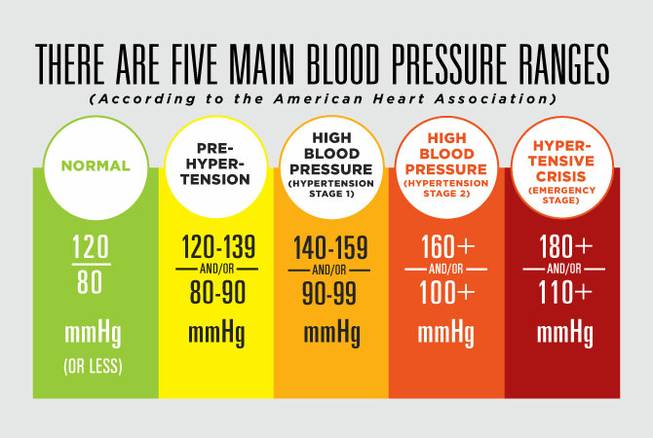Understanding The Highs And Lows Of Your Blood Pressure Reading

Blood pressure is a key indicator of how well the cardiovascular system is functioning and can signal many diseases and conditions.
“It measures the pressure of blood flow to the vascular system. This is necessary for all the organs in the body to receive adequate nutrition and oxygen to function,” said Navid Kazemi, MD, cardiologist and chair of MountainView Hospital Cardiac Services Department.
There is a healthy blood pressure range, and having too high or too low blood pressure can cause serious, long-term health consequences.
Unfortunately, the importance of healthy blood pressure often is overlooked, and many people with poor blood pressure may not realize they’re at risk.
Decoding your blood pressure reading
According to the American Heart Association, an optimal blood pressure range is at or less than 120/80 mmHg. This is what those numbers mean:
• The top number (120) is your “systolic blood pressure.” It indicates how much pressure the blood is exerting while the heart is actively pumping into the blood vessels.
• The bottom number (80) is your “diastolic blood pressure.” It indicates how much pressure the blood is exerting between pumps. “Diastolic blood pressure is the baseline pressure in the blood vessels when the heart is resting,” Kazemi said.
• “mmHg” is the abbreviation for “millimeters of mercury.” Mercury is used to gauge pressure in many medical measurements.
Which number is most important?
Both. Having a high number in either systolic or diastolic pressure can lead to a diagnosis of hypertension (high blood pressure). However, systolic pressure tends to get more attention because high systolic blood pressure is a risk factor for cardiovascular disease for people over 50, and it can indicate major cardiac events.
Also note: Heart rate and blood pressure are not the same, and they can indicate different issues. The American Heart Association reports that blood pressure measures the force that blood moves through blood vessels, and heart rate measures the amount of times your heart beats per minute. Having a healthy heart rate does not necessarily mean your blood pressure is in a healthy range. Both measurements are important, but one does not replace the other.
Hypertension (high blood pressure)
Hypertension, the clinical term for high blood pressure, is a common and dangerous condition. “It causes persistent strain on both the heart and the blood vessels, which can lead to serious dysfunction,” Kazemi said. “This can manifest as weakening of the heart, as well as damage to the blood vessels, causing various organ failure in the long-term.”
There may be some symptoms that accompany hypertension — such as fatigue, shortness of breath and headaches — but in general, the condition shows no typical symptoms.
Hypertension can cause stroke, acute kidney failure, heart attack and blindness, among other ailments.
Risk factors for hypertension include age, high body weight, low activity level, poor diet, smoking, excessive alcohol consumption, high stress levels, certain chronic diseases (including diabetes) and a family/personal history with the condition.
Blood pressure naturally gets higher with age. In people younger than 60, 140/90 mmHg is considered high, but in people older than 60, 150/90 mmHg is acceptable.
What about low blood pressure?
Hypotension, or low blood pressure, is less common than hypertension, but it can cause serious health consequences. Chronic low blood pressure is associated with organ failure because not enough oxygen can circulate throughout the body.
When to get blood pressure readings
“A normal person who has never has high blood pressure does not require regular readings beyond their yearly check-ups,” Kazemi said. “Patients with a history of hypertension should be checked more frequently.” Talk to your doctor about how often you should have your blood pressure checked, and follow that schedule closely.
Habits for promoting healthy blood pressure
Blood pressure is greatly influenced by lifestyle, so most healthy people can properly manage blood pressure without medical intervention.
“Keeping body weight within a normal range, eating a heart-healthy diet, decreasing mental stress and having a regular aerobic exercise routine can have a profound effect on blood pressure,” Kazemi said.
Story Credit: https://lasvegassun.com/native/mountain-view/2017/jul/03/understanding-the-highs-and-lows-of-your-blood-pre/


